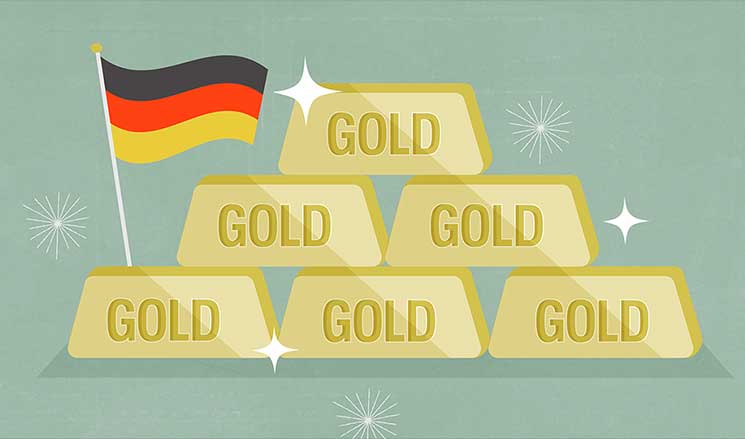Germany has pulled all of its gold out of Paris

Quartz
In a secret operation that took five years to complete, Germany’s central bank moved 374 metric tons of gold, worth around $15 billion, out of vaults in Paris. The final batch of 91 metric tons was shifted back to Frankfurt this year, the bank announced yesterday.
The bank is keeping a fair share of its gold in New York, but over the past few years it has repatriated 300 metric tons of the precious metal from there, too. This operation was scheduled to take until 2020, but with typical efficiency the Germans completed the transfer ahead of schedule.
Just over half of the central bank’s impressive $140 billion stockpile, the second-largest in the world (after the US), is now back home.
The bank’s reasoning for the repatriation, which cost around $9 million, was “to build trust and confidence domestically.” Conspiracy theorists, of which there are many in the gold world, came up with a variety of darker, far-fetched motives. “When the inspections of transfers had been concluded, no irregularities came to light with regard to the authenticity, fineness or weight of the bars,” the bank said.
Germany had originally shifted the majority of its gold to vaults maintained by fellow central banks in Paris, London, and New York during the Cold War. At the height of East-West tensions, West Germany feared that the Soviets would seize the country’s gold stockpile. Even after that threat receded, the costly logistics of moving that much gold—a great target for thieves—convinced Germany policymakers to leave it alone.
In 2012, a German court called for an inspection of the country’s foreign holdings, annoying the gatekeepers of those vaults, who understandably keep their facilities under elaborate lockdown. The bank felt it had to go through with it, though, amid reports of discrepancies in its record-keeping. The euro zone was also in the depths of its debt crisis at the time, raising fears for the future of the currency, the soundness of member state’s finances, and much else besides.
Alongside the repatriation plan, the German central bank began publishing an exhaustive inventory of the gold bars it owns. The accounts feature every bar’s serial number, melt number, gross weight, fineness, and location. The latest edition runs to 2,398 pages.
